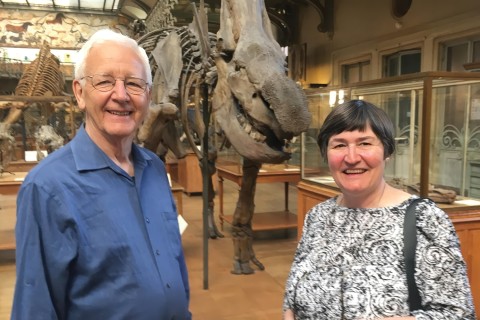The Church of Santa Claus
The Church of Santa Claus—St. Nicholas—
in Galway’s Latin Quarter was once used
by Cromwell’s men, in 1652
to stable their horses after the siege
that brought the Catholics low and drove the tribes,
the mighty O’Loinsighs, neither last nor least
among them, from power and high stations,
in what was called the Eleven Years’ War.
Of course, papists understood privations,
the grueling journey, no room in the inn,
the foul breath of mammals and manger scenes,
poverty, inauspicious beginnings
all central to the story Christians tell:
O come, O come, Emmanuel
about the lord and savior, Jesus, son of God
long prophesied in Isaiah’s account
of silent nights and holy nights, a Christ
coincident with the winter solstice,
virgins giving birth to gods becoming men,
the blood and bodily intrigues whereby
we are all spared eternal damnation,
no less the angels we have heard on high.
Such mysteries got ancient churches built,
as this collegiate church came into being
now more than seven centuries ago
to help the locals better come to grips
with life and love and grief and sudden death.
The Lynches then as now were churchgoers
though more for funerals than leaps of faith,
getting corpses to their final resting places
more than worshiping or saving face;
we hedged our bets the way that Blaise Pascal
advised we ought, to wit, a better wager
to believe in a god that isn’t than
to disbelieve for pride’s sake in a God that is.
What with their chevron and their fleurs-de-lis
glorious and sorrowful mysteries—
some too far-fetched to actually believe,
the one about Mary, virginal, used
as willing vessel of the holy spirit
to bring the god man into being—
it seems a stretch, sexless nativity.
The word becoming flesh without the fun,
as if the blessed virgin were a nun
cloistered in obedience and chastity,
birthed out of immaculate conception
with little say in the matter, really, none.
Luke at least gave her some agency—
enough to question the angel Gabriel:
“How shall this be as I know not a man?”
No worries there, dear girl, we have a plan,
quoth Gabriel. C’est le pigeon, wrote Joyce.
We’ll make the case to Joseph in a dream,
thus auguring against cuckoldry.
Whatever else we know, the metaphors
add up to yearly festivals of light,
Hanukkahs, Christmases, Epiphanies
whereby we see things as they truly are,
fresh calendars of blessings and the sense,
that after everything, we’re going to be alright.



